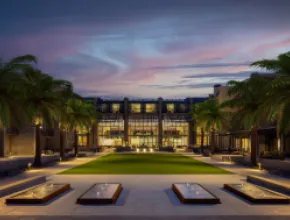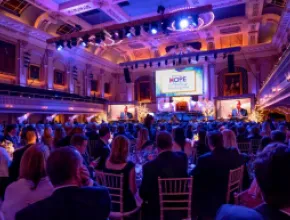In January, Singapore Changi Airport's Terminal 3 opened for business—a Singapore Airlines flight from San Francisco was the first plane to land at this new ultra-modern, high-tech terminal. Offering 4.1 million square feet of space on seven levels, the terminal cost $1.2 billion to build and sets a new standard for airport service and amenities.
Travelers won't see some of what officials hope will set Terminal 3 apart—there's a fully automated, high-speed baggage transfer system that updates changes in the flight itinerary of passengers so that their bags get on the right flights, and speedy passenger check-in and immigration clearance was built into the structure's floor plan.
What travelers will notice right away, whether they're in the arrivals or departure areas, is the "Green Wall," a five-story-high vertical garden. Spanning nearly 1,000 feet, the wall is covered with climbing plants and has a whopping four cascading waterfalls. Those waiting for their baggage should check out the sculptured sandstone wall display located below the hanging garden.
The shopping and dining here is impressive, as well. There are 100 retail shops and 40 bars and eateries. Some notable restaurants include the first Hard Rock Cafe in a major international airport, the first Guylian Belgium Chocolate Cafe outside Belgium, and the first airport microbrewery in Asia. For those who find all these choices too stressful, the spa cabin, make-up studio or fragrance-sensory Internet kiosks should do the trick.
Singapore Airlines long-haul flights will now operate out of Terminal 3 and its regional flights will operate out of Terminal 2. The new building adds a capacity of 22 million passengers per year to Changi Airport, bringing the airport's total annual capacity capability to about 70 million passengers. Terminal 3 also adds another 28 gates to Changi Airport, and among the 28 gates, eight are designed to handle the A380 "super-jumbo" aircraft.





